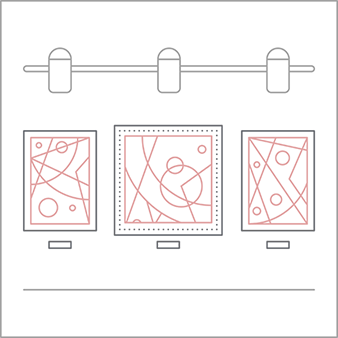Dion Cupido: Return to Eden
In the world of portraiture, Dion Cupido is the real deal. His edgy reflections of people marked by their urban environment and the pressures of blue-collar living provide a glimpse of the realities he faced as a child in Mitchells Plain, a notorious neighbourhood on the not-so-glamorous side of Cape Town.
вҖңThey say that if youвҖҷre not a socialist in your twenties, you donвҖҷt have a heart, and if youвҖҷre not a capitalist by the time youвҖҷre in your forties, you donвҖҷt have a brain. But look at how most people live. Democracy is failing the poor and we donвҖҷt know what the answer is. I was lucky enough to get a job with a computer company when I left school, but all I wanted to do was to paint. On my lunch breaks I used to look through the windows of art galleries and dreamed about painting for a living, but my working class background just closed doors for me,вҖқ Cupido says.
He painted as much as he could in his spare time and pursued every opportunity available, usually via community art programmes where he could get paint and canvasses at cheaper prices. Eventually his work started showing up in group exhibitions in unlikely venues like coffee shops and foyers, till one day gallerist Charl Bezuidenhout saw his work. вҖңI absolutely loved his willingness to push away from what everyone was doing and create his own style in the classic genre of portraiture. No one else was telling their story with so much raw emotion and it felt true,вҖқ says Bezuidenhout.

In the world of portraiture, Dion Cupido is the real deal. His edgy reflections of people marked by their urban environment and the pressures of blue-collar living provide a glimpse of the realities he faced as a child in Mitchells Plain, a notorious neighbourhood on the not-so-glamorous side of Cape Town.
вҖңThey say that if youвҖҷre not a socialist in your twenties, you donвҖҷt have a heart, and if youвҖҷre not a capitalist by the time youвҖҷre in your forties, you donвҖҷt have a brain. But look at how most people live. Democracy is failing the poor and we donвҖҷt know what the answer is. I was lucky enough to get a job with a computer company when I left school, but all I wanted to do was to paint. On my lunch breaks I used to look through the windows of art galleries and dreamed about painting for a living, but my working class background just closed doors for me,вҖқ Cupido says.
He painted as much as he could in his spare time and pursued every opportunity available, usually via community art programmes where he could get paint and canvasses at cheaper prices. Eventually his work started showing up in group exhibitions in unlikely venues like coffee shops and foyers, till one day gallerist Charl Bezuidenhout saw his work. вҖңI absolutely loved his willingness to push away from what everyone was doing and create his own style in the classic genre of portraiture. No one else was telling their story with so much raw emotion and it felt true,вҖқ says Bezuidenhout.









